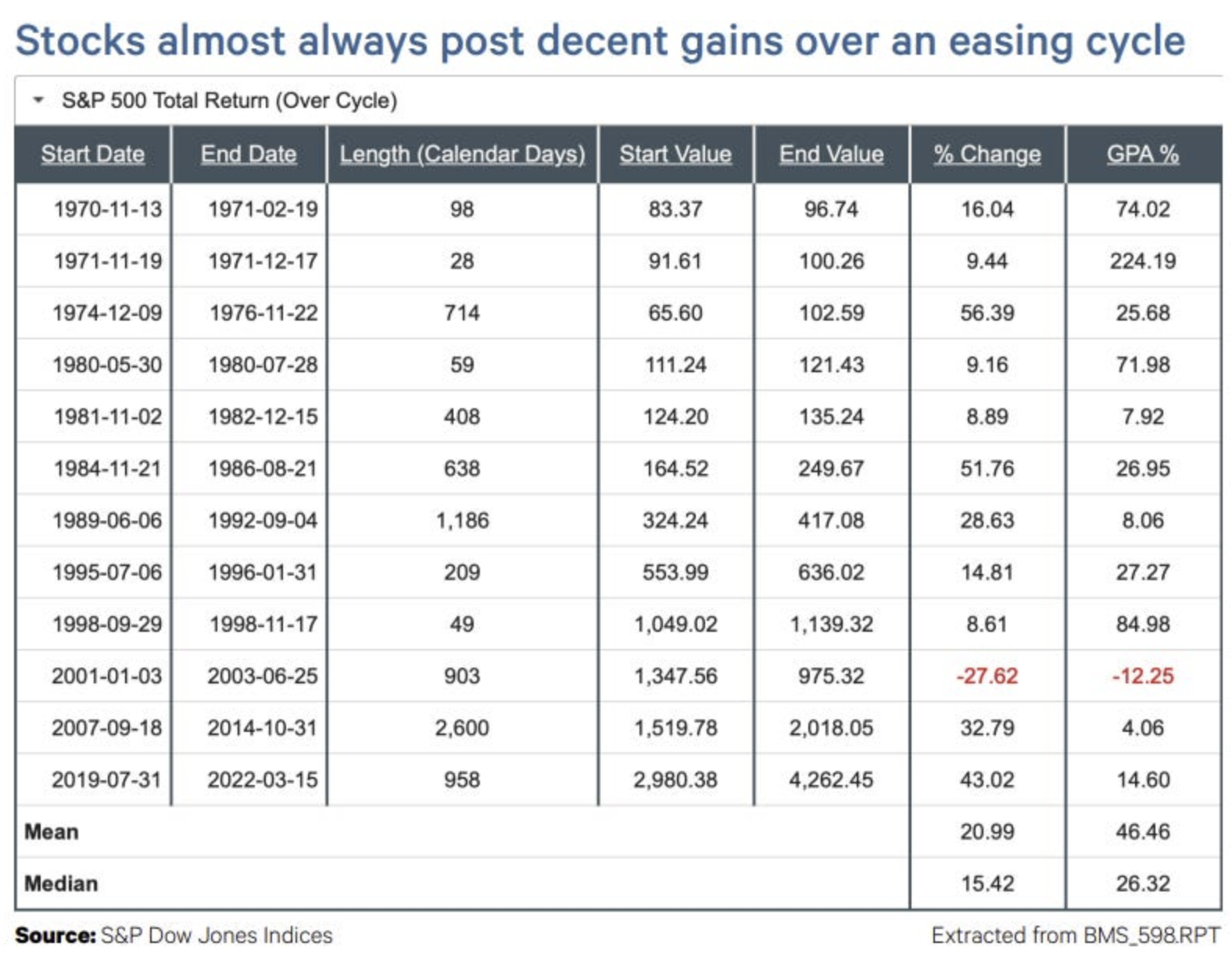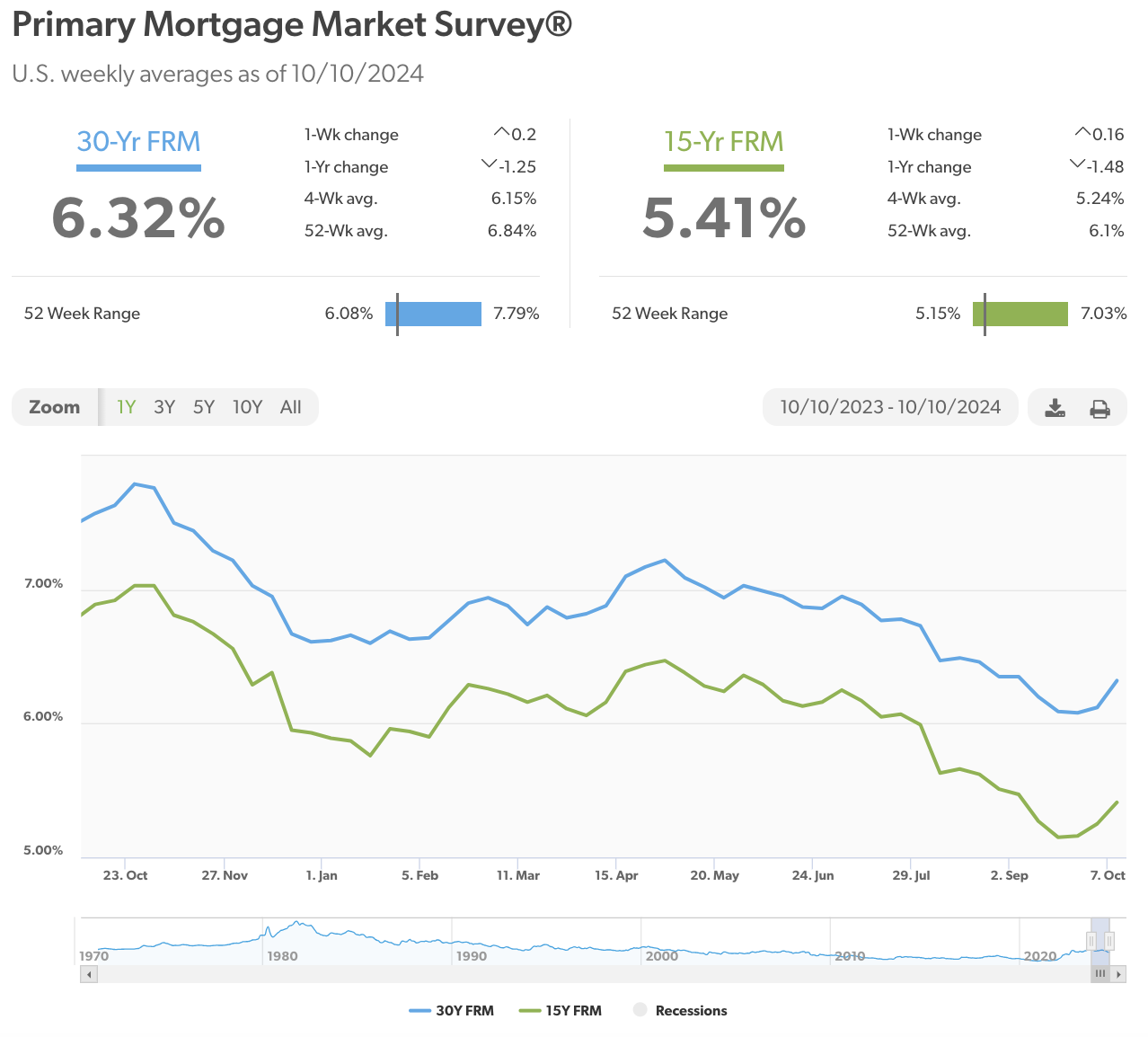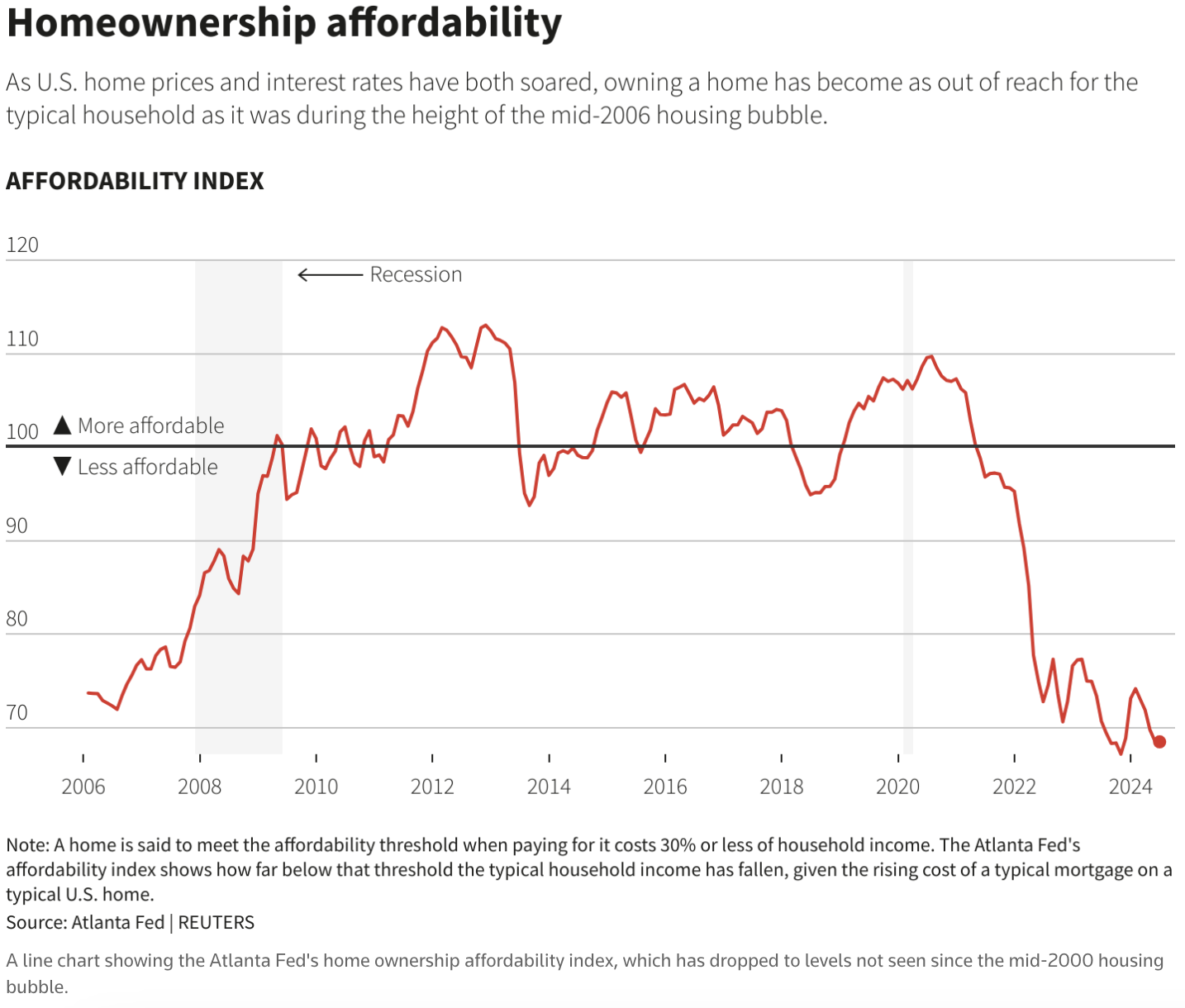
If you haven’t been watching the headlines, thinking about the stock market, buying a house or applying for a line of credit, then you may have no idea that interest rates have recently gone down.
Indeed, the Federal Reserve (the Fed) announced last month it is cutting its benchmark rate by 0.50% to a target rate of 4.75% to 5% (from 5.25 to 5.50%). Interest rate changes reverberate throughout the economy in a big way affecting jobs, home prices, the stock market, consumer spending and more.
The Fed has two mandates as part of its monetary policy: the first is to maintain maximum employment; the second is to keep inflation low and prices stable. It attempts to control each by using its most effective policy tool: interest rates. The primary reasons why the Fed would cut rates include:
- Signs of a slowing economy where consumer demand begins to falter, the job market begins to soften and general economic activity shows signs of weakening.
- During a high inflationary period, the Fed raises rates, and once inflation has subsided, it will cut rates in an attempt to ensure the economy doesn’t slip into a recession due to unnecessarily tight monetary policy.
- An emergency or exogenous event (eg. pandemic, regional conflicts, etc.) that restricts economic activities, outside of normal economic and market forces.
Below are just a few of our responses to questions that many clients and investors have about the current interest rate changes.
DOES A FED CUT MEAN THE CENTRAL BANK IS ANTICIPATING A RECESSION?
A rate cut by the Federal Reserve doesn’t automatically mean a recession is coming. While many historical rate cuts have occurred in the midst of a looming recession, there have been times in our modern history, where the economy continued growing while the central bank lowered their benchmark rates.
As outlined above, rate cutting decisions are based on multiple factors, including lowering inflation and managing unemployment levels. If inflation is coming down, but employment remains strong or at least steady (as it is currently), the economy may experience what is known as a “soft-landing”. This means that the Fed achieved its goal stopping an economy from overheating and experiencing excessively high inflation for too long, but was able to manage interest rates in such a way as to not cause a severe downturn or economic recession.
Above is a chart of the Federal Funds rate (blue line) and the annual change in CPI (red line) from March 1st, 2022 – September 1st, 2024. During this time interest rates climbed from 0.25% to 5.5%, while inflation peaked at 9.1% (June 2022) and by end of August 2024 had dropped down to 2.5%. You can see the correlation between the Fed’s increase in rates and the drop in the annual percentage change in core inflation.
Over the same period, the job market remains strong. Unemployment (while trending up) is still well below its long term average of (5.69%) and employers continue to add jobs each month.
WHAT IS THE EFFECT OF RATE CUTS ON THE STOCK MARKET?
Often, the major stock market indexes (eg, S&P 500) will react quickly to any broadcasted moves by the Fed to raise or lower interest rates, well before a rate change has been officially announced. Because economic growth is fueled by spending and spending is magnified by how much people, business and governments can borrow, a potential drop in rates can be a mixed signal to the market.
On one hand it can signal that the Fed is concerned about an economic slowdown, which implies less economic activity (lower spending), resulting in slower earnings growth for companies. Slower earnings growth could mean lower stock market valuations and a reason to justify a market selloff.
On the other hand, if rates are dropping because inflation is under control, and the job market is resilient with low unemployment (between 3% and 5%, the most recent report has it at 4.1%) then this could be positive for the market. It would imply lower prices, stronger purchasing power and resilient consumer spending. This could translate to stronger earnings potential and a reason for the market to rally.
As stated in this Fidelity post, ”The difference between the positive years and the rocky ones isn’t a function of what the Fed does, but rather why it’s doing it.” The graph below highlights how the S&P 500 has performed when the Fed funds rate is falling. Since 1962, the market has averaged 9% returns. However, if the Fed funds rate is above 5% and inflation is below 3%, then the market tends to be even stronger.
DO FALLING RATES MEAN BOND PRICES WILL GO UP?
Generally, there is an inverse relationship between interest rates and bond prices. If rates drop, bond prices tend to increase and vice versa. However, the magnitude of this increase (or decrease) is dependent on many factors, including: time until bond matures (duration), frequency of coupon payments, the bonds convexity and the current state of the yield curve.
Generally, the biggest impact on price sensitivity is how long until the bond matures. If rates move up, new long-term bonds will be more sensitive, since they pay higher income for longer and the demand for the existing lower income producing long-term bonds goes down. This is because the market seeks investment with a higher income yield.
The inverse is true. If newly issued, long-term bonds have lower interest coupon payment (lower income) because rates are dropping, then the demand for previously issued, long-term higher yielding bonds goes up as investors do not want to be stuck owning lower yielding investments for too long. This market preference affects supply and demand for these bonds and determines what price investors are willing to pay which determines total return of the bond.
When the Fed cuts interest rates it will often mean an increase in bond prices and total bond returns. However, the market isn’t static. It anticipates decisions such as future Fed cuts and factors them into bond prices early, rightly or wrongly.
WILL MORTGAGE RATES FALL?
While a drop in the Fed Funds rate would seem to imply lower financing costs, the reality is by the time the Fed actually cuts interest rates the mortgage market has often anticipated the move and already changed the terms of new loans (much like the stock market has already priced in an interest rate move). This would mean that when a rate cut is announced, it is not likely to lead to an additional adjustment in mortgage rates, unless at the time of the announcement the Fed suggests more rate cuts to come.
As an example, for the week ending September 12th, 2024 the average 30 year fixed mortgage rate had dropped to 6.2%, about 1.6% lower than the post-pandemic high. However, the Fed didn’t actually announce its rate cuts until a week later, highlighting how the rates moved before the Fed acted, but knowing full well that it was intending on lowering rates.
IF INFLATION IS DROPPING, WILL HOUSING BECOME MORE AFFORDABLE?
When rates increased significantly in 2022, housing affordability dropped precipitously. The 30 year fixed mortgage rate increased from a historic pandemic low of 2.7% in 2021 to nearly 8% in 2022, nearly tripling the cost of financing for a primary residence. This led to a noticeable slowdown in demand for housing through 2023. However, given that the housing market’s inventory supply was low to begin with, it didn’t lead to as big of a drop in housing valuations as buyers may have hoped.
With rates now coming down, buyers will have additional purchasing power. This means that whatever relief first time home buyers were seeing in more stable housing prices, will likely begin to evaporate. The “Affordability Index” below, highlights how home affordability is as low as it was in the middle of the housing boom in 2006:
WILL RATES ON STUDENT LOANS AND PERSONAL LINES OF CREDIT COME DOWN?
When the Fed cuts rates, the costs of federal student loans do not change right away. This is due to the fact that Congress sets federal student loan rates in May of each year, based on the highest 10-year Treasury note and the rate is fixed for the life of the loan. These rates apply to loans disbursed for the 12 months, following July 1st of that year.
However, student loans from private lenders will likely come down, if they haven’t already. These rates vary by lender, can be fixed or variable and will be highly dependent on the borrowers credit score and financial situation.
Auto loans, lines of credit and credit cards are all impacted by a change in the Fed Funds rate. Often these loans are based on a spread over the benchmark known as the Prime Rate. The Prime Rate is usually determined as a 3% spread over the Fed Funds rate. So, if the rate is now targeted to be between 4.75% and 5%, you can expect the Prime Rate to be close to 8%. However, the Prime Rate is just the starting point. Most consumer loans will have an additional spread over the Prime Rate and the degree of this spread will be determined by the nature of the borrowing.
New auto loans will generally benefit from interest rate cuts, but existing loans have terms that are already set and will not change unless the loan is refinanced into some other borrowing facility (similar to refinancing a mortgage).
Personal lines of credit and credit card rates will also come down. However rates on credit cards may also stay stubbornly high even during low interest rates environments. New card promotions, however, may reflect the new lower rate environment, at least initially.
WHAT DOES IT ALL MEAN?
While a Fed rate cut has broad impacts, it’s important to understand that these effects are not always immediate or uniform. Rate cuts can signal a potential slow down in the economy, but can also signal confidence that the Fed is managing inflation effectively. Financial markets and consumers alike must stay attuned to the underlying reasons behind these decisions. In the end, it’s the “why” behind the Fed’s actions that shapes the true economic impact.








